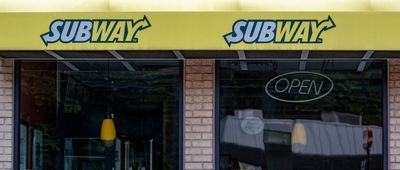For eco-minded consumers, residential solar power is an attractive alternative to relying on a utility company. Harvesting energy from the sun provides electricity without the greenhouse gas emissions of traditional power sources. But is it a good choice for the frugal? Although the upfront cost is steep, consumers in America's largest cities can save between $44 and $187 a month on electricity by investing in solar, according to a 2015 report by the NC Clean Energy Technology Center. For nine out of 10 homeowners, putting in a rooftop solar panel system would cost no more than paying their current electric bill over the life of the system.
The report, funded by the U.S. Department of Energy, finds that with low-cost financing and government incentives, a solar project can yield a better return on investment than the stock market. Before picking solar over the S&P 500, consumers should note that the center's stated purpose is to advance clean energy. Still, for those interested in solar -- and with rooftop space to spare -- the report suggests that it's worth comparing costs over the long term.
On and Off the Grid
There are two basic types of solar panel systems for residential properties: off the grid and on the grid. An off-grid setup is generally reserved for places where utility-based power is unavailable, or for enthusiasts living off the grid. These systems are at the mercy of natural fluctuations in the weather. They require a cache of backup batteries to store power for nighttime and for days when skies are gray. Despite decreasing prices and climbing efficiency, this technology isn't a practical option for most consumers (yet).
A grid-tied or on-grid solar panel system is a potential money-saving option for the here and now. It connects to a traditional power source, which provides electricity when household usage exceeds the solar power the system generates. Without a storehouse of batteries, the equipment, installation, and maintenance costs are much lower. This setup allows electricity to flow both ways, and consumers often get credit from the local utility company for any excess power they feed into the grid.
The necessary hardware is available at nationwide retailers including Costco, where grid-tied solar kits range from $1,900 to $13,000. A kit typically comprises solar panels, an inverter, and a rooftop rack. DIY types may want to consider going that route, but installation can be a challenge. Areas with mature solar industries offer competitive pricing for professional installation. An alternative is to lease a solar panel system or have one installed as part of a solar power purchase agreement. Although this eliminates the hardware and installation costs, consumers who go this route still pay for all their electricity (sometimes less than they were paying for nonrenewable energy). They also are not eligible for tax breaks and other incentives, which instead accrue to the solar services provider.
Comparing Costs
Residential utility rates are typically given in cents per kilowatt-hour. To come up with a similar rate for solar, the NC Clean Energy Technology Center divided the cost of a 5 kW rooftop solar panel system (the average size of a residential system in the U.S., according to the Solar Energy Industries Association) by its total estimated output over 25 years. Naturally, the output is higher in areas that get more sun. The report accounts for inflation and assumes the system would be financed by a 25-year loan with 5 percent interest. In 42 out of the 50 largest U.S. cities, the estimated price of solar power turns out to be lower than the local utility rate over the long term.
A host of government incentives sweeten the deal. Any U.S. taxpayer who puts a solar panel system in place through the 2016 tax year is eligible for a 30 percent Residential Renewable Energy Tax Credit from the federal government. (Keep in mind that a tax credit is more valuable than a tax deduction.) The states offer additional incentives, including tax credits and property tax exemptions. The U.S. Department of Energy funds a searchable database of state policies and incentives.
Of course, it will be years before a loan is paid off or the energy savings make up for the high upfront cost of a solar panel system, and many people don't plan to stay in their homes that long. Solar panels can also raise property values, however. In a 2013 study, the Lawrence Berkeley National Laboratory found that a solar panel system increased the value of a California home by $5,900 per kilowatt. For the average 5 kW system, that amounts to nearly $30,000.








